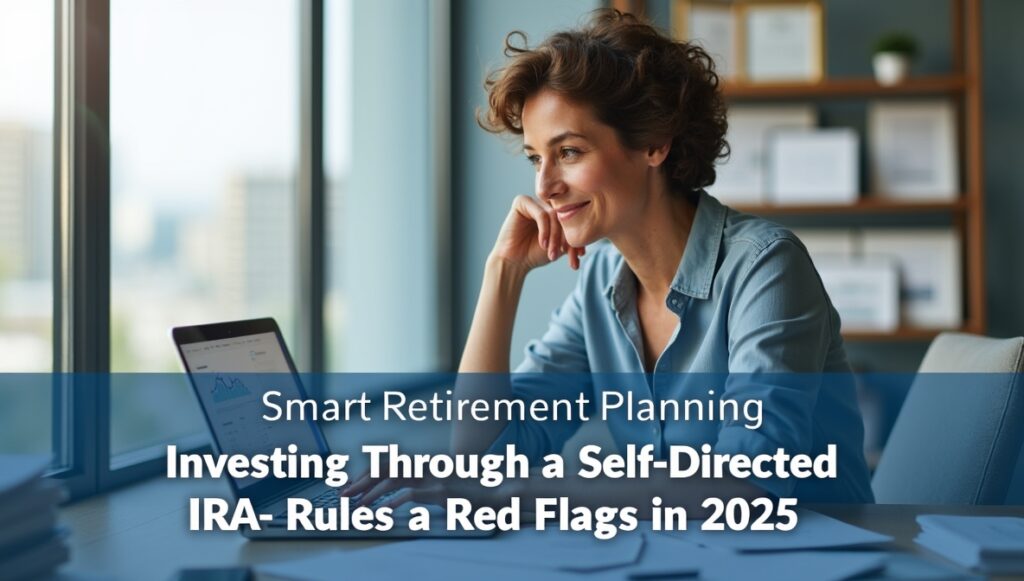
Page 1: What is a Self-Directed IRA?
When planning for retirement, many people use something called an IRA. An IRA stands for Individual Retirement Account. It’s a way to save money for retirement without paying taxes on it right away. But not all IRAs are the same.
A self-directed IRA is a special kind of IRA. It gives you more control over your investments. Most IRAs only let you invest in things like stocks, bonds, or mutual funds. But with a self-directed IRA, you can choose from many more options. These include:
- Real estate
- Private companies
- Gold or other precious metals
- Cryptocurrency
This might sound exciting, but it also comes with risks. That’s why it’s very important to learn about investing through a self-directed IRA: rules and red flags. If you don’t follow the rules, you could lose money or pay big penalties.
Page 2: The Rules You Must Follow
When investing through a self-directed IRA: rules and red flags must be taken seriously. The IRS (Internal Revenue Service) has clear rules that you must follow. Here are some of the most important ones:
1. No “Self-Dealing”
You are not allowed to use your self-directed IRA to benefit yourself or your family directly. For example:
- You can’t buy a house with your IRA and live in it.
- You can’t rent that house to your child or your parents.
- You can’t use IRA money to loan yourself cash.
This is called “self-dealing,” and it’s against the law. If you break this rule, the IRS can cancel your IRA. Then you would have to pay taxes and penalties.
2. Use a Custodian
You need a special company, called a custodian, to hold your self-directed IRA. This custodian makes sure the account follows the law. But be careful—some custodians don’t check if your investments are safe. That means the risk is all on you.
3. Know the Types of Investments
You are allowed to invest in many things with a self-directed IRA, but not everything. These are not allowed:
- Collectibles like art, antiques, or wine
- Life insurance
- Investments in your own business
That’s why you must understand investing through a self-directed IRA: rules and red flags before you make a decision.
Page 3: Red Flags to Watch Out For
There are also many scams out there. Some people take advantage of those who don’t know the rules. Here are a few red flags to look out for:
1. Promises of Huge Returns
If someone tells you, “You’ll make a ton of money quickly,” be careful. High returns often mean high risk—or even fraud. Real investments grow slowly over time.
2. Pushy Sales Tactics
If someone pressures you to act fast or says “This is a once-in-a-lifetime deal,” that’s a bad sign. Good investments don’t come with a sales pitch.
3. No Clear Information
Always ask questions. If you don’t understand where your money is going or what it’s buying, don’t invest. Make sure you can see legal papers and understand them. Investing through a self-directed IRA: rules and red flags should always be reviewed before signing anything.
Final Thoughts
In 2025, more people are using self-directed IRAs to grow their retirement savings. These accounts offer great freedom, but they also come with great responsibility. To protect your money, make sure you understand investing through a self-directed IRA: rules and red flags.
Before you invest:
- Talk to a trusted financial advisor.
- Learn the IRS rules.
- Avoid anything that sounds too good to be true.
Remember, your retirement is important. Taking the time to understand how self-directed IRAs work can help you grow your savings safely and wisely.


